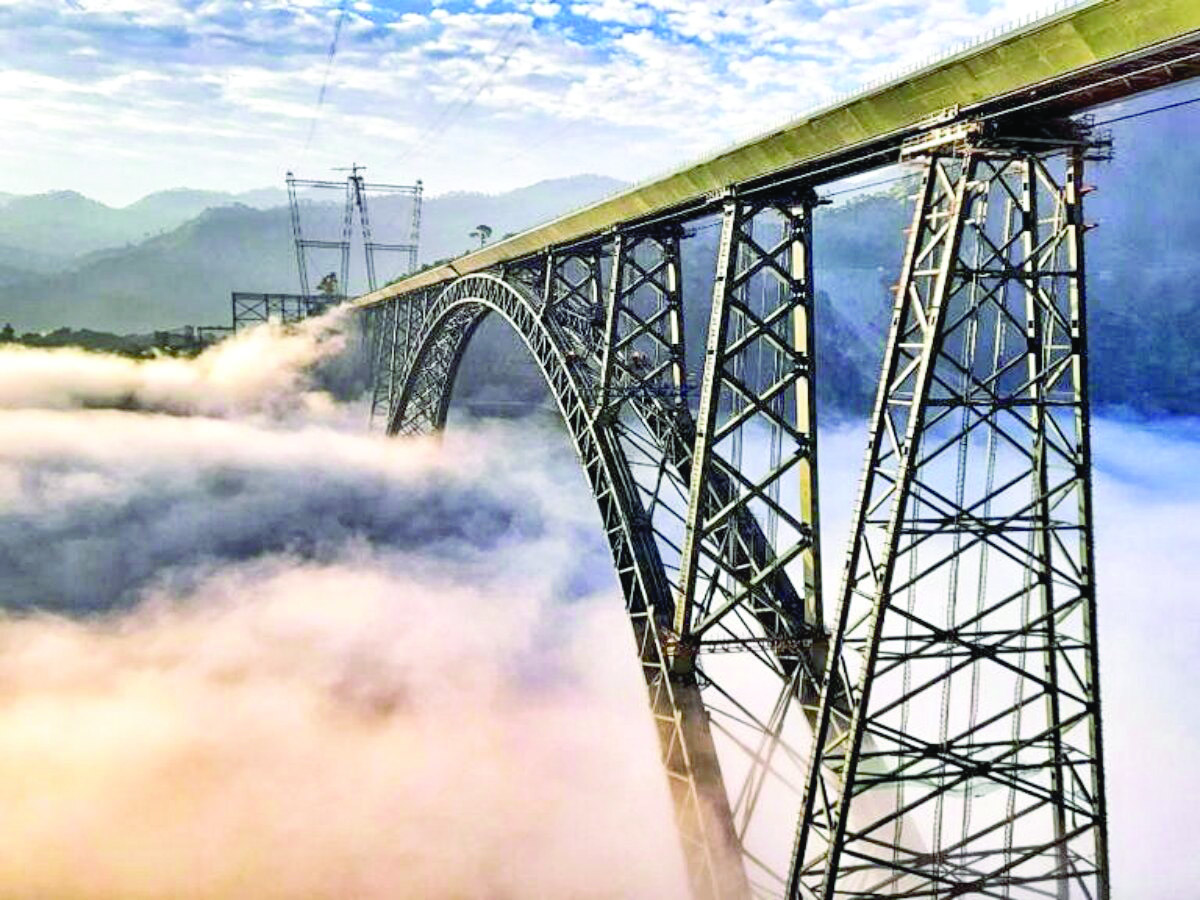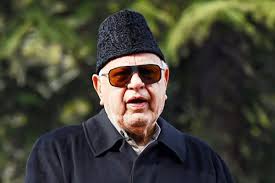The Bridge That Defies Gravity—and Expectations
India just redefined what’s possible in engineering, connectivity, and nation-building. On June 6, 2025, Prime Minister Narendra Modi inaugurated the world’s highest railway arch bridge — the Chenab Rail Bridge, which soars 359 meters above the riverbed, higher than even the Eiffel Tower.
Perched in the Reasi district of Jammu and Kashmir, this monumental bridge is more than an architectural wonder — it’s a symbol of India’s rising aspirations, especially for the long-underserved region of Kashmir.
Connected through the Udhampur-Srinagar-Baramulla Rail Link (USBRL), the Chenab Bridge is poised to revolutionize travel, trade, tourism, and national security, acting as the keystone for the valley’s transformation.
An Engineering Masterpiece in the Mountains
Key Technical Specs of the Chenab Rail Bridge
-
Height: 359 meters above the Chenab River (35 meters taller than the Eiffel Tower)
-
Length: 1,315 meters
-
Arch Span: 467 meters (longest of its kind globally)
-
Wind Resistance: Up to 260 km/h
-
Seismic Stability: Engineered to withstand major earthquakes
-
Materials Used: Over 28,000 metric tons of steel
-
Construction Duration: Nearly 2 decades, overcoming terrain and geopolitical challenges
Engineers had to fly materials via cable cranes, design blast-resistant piers, and brace for snow, wind, and quakes — all while ensuring safety and sustainability. The result? A bridge that combines beauty, strength, and utility on a scale rarely seen in civil infrastructure.
The USBRL Project: Kashmir’s Lifeline on Tracks
The Udhampur-Srinagar-Baramulla Rail Link has long been envisioned as a strategic and economic game-changer. By linking Kashmir to the rest of India via an all-weather, high-altitude rail network, it replaces dependence on the fragile Srinagar-Jammu National Highway, notorious for landslides, snow, and closures.
Benefits of USBRL:
-
Reduces Jammu-Srinagar travel time to just 3–4 hours
-
Enables direct cargo trains from Kashmir to Delhi and beyond
-
Offers year-round, reliable, low-cost transportation
-
Acts as a strategic military asset for fast mobilization
Tourism on Fast Track: From Gulmarg to Vaishno Devi
For Kashmir’s fragile economy, tourism is oxygen. The Chenab Rail Bridge—combined with the nearby Anji Cable-Stayed Railway Bridge, also inaugurated by PM Modi—is set to boost footfall and revenue in big ways:
What This Means for Tourism:
-
Pilgrimage Access: Devotees can now reach Vaishno Devi with greater ease
-
Adventure Tourism: Gulmarg, Pahalgam, Sonmarg more accessible for skiing, trekking
-
Luxury Rail Packages: Scope for curated tours via scenic valley routes
-
Regional Travel: Families, students, and workers can afford frequent travel
Expected Impacts:
-
25–30% rise in tourist footfall within the first year
-
New hospitality projects expected across rail-linked towns
-
Employment boost for locals in travel, food, transport sectors
Trade & Logistics Revolution: Exporting Kashmir to the World
Kashmir produces world-famous apples, saffron, walnuts, shawls, and handicrafts. But till now, poor logistics and broken supply chains prevented these goods from reaching markets on time.
With the rail corridor in place, Kashmir now becomes logistics-friendly and market-accessible.
How the Bridge Helps Local Trade:
-
Freight trains will carry produce directly to Delhi, Mumbai, Chandigarh
-
Transit times for perishables will drop by 60–70%
-
Reduces damages, pilferage, and costs
-
Offers scope for e-commerce warehousing and cold chains
Artisans, orchardists, and traders stand to gain the most — with better margins, wider reach, and guaranteed delivery timelines.
Business & Industry: From Isolation to Integration
The improved infrastructure acts as a magnet for industrial investments, including:
-
Food processing hubs for apples and dry fruits
-
Craft export clusters for shawls, papier-mâché, woodcraft
-
Pharmaceutical and agro-industries thanks to easier import of raw materials
-
Warehousing and packaging units near railway nodes
This kind of connectivity places Kashmir in India’s mainstream economic map, transforming it from a consumer state to a contributor.
National Security: Strategic & Swift
The Chenab Bridge and USBRL corridor are not just civil assets — they’re strategic shields.
Security Gains:
-
Troops and equipment can be moved rapidly to sensitive border areas
-
Reduced dependency on vulnerable highway routes
-
Enhances intelligence coordination through faster movement
-
Supports emergency response during natural disasters
Military experts consider this project a critical deterrent enhancer in the region.
Social Impact: Unity Through Mobility
Who Benefits:
-
Students studying outside can visit home more often
-
Patients gain access to better hospitals in Jammu/Delhi
-
Families separated by migration reconnect easily
-
Job seekers can commute for work affordably
This is more than transport — it’s dignity on wheels.
What the Future Holds: New Lines, New Lives
With the Chenab Bridge now functional, attention turns to expanding routes and services:
-
High-speed passenger trains to Delhi, Amritsar, Chandigarh
-
Luxury tourism coaches with panoramic views of the valley
-
Cargo integration with Indian Railways’ national grid
-
Smart stations at Srinagar, Anantnag, and Baramulla
-
Development of rail-linked industrial parks
Voices from the Ground
“This bridge isn’t just steel and concrete; it’s our bridge to opportunity.”
— Khalid Ahmad, Saffron Farmer, Pampore
“We used to fear snowfall. Now we welcome it — the train runs anyway.”
— Ruqaya Bano, Schoolteacher, Anantnag
“Our art will now travel faster than ever before.”
— Ghulam Rasool, Papier-Mâché Artisan, Srinagar
PM Modi’s Vision: Infrastructure as Identity
In his inaugural speech, PM Modi called the Chenab Bridge “India’s new identity”, highlighting how the country is scaling new heights — literally and metaphorically.
He also announced future projects including:
-
New tunnels in Kashmir for uninterrupted winter travel
-
Digital connectivity expansion through rail fiber optics
-
Multi-modal hubs integrating air, rail, and road
Bottom-Line: Steel, Stability & a New Story for Kashmir
The Chenab Rail Bridge is not just the world’s highest railway arch — it’s the foundation of a new Kashmir.
-
A Kashmir connected to dreams, not disruptions
-
A Kashmir where tourists arrive freely, and traders sell globally
-
A Kashmir where conflict gives way to commerce
The bridge is steel — but its impact is human. It binds a region, uplifts its people, and builds a better tomorrow.



